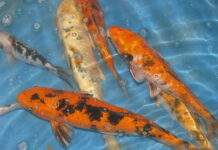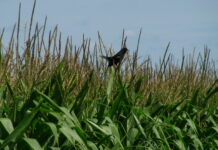Photo credit: DiasporaEngager (www.DiasporaEngager.com).
Investigation and Outcomes
After being notified of positive Vibrio clinical test results through routine disease surveillance, public health officials in all states interview patients using the Cholera and Other Vibrio Illness Surveillance case report form,† which collects information on underlying conditions, clinical outcomes, and exposures occurring before illness onset. For cases involving raw oyster consumption, investigators contact retail facilities, collect oyster harvest tags, and notify relevant state and federal authorities after reports of possibly contaminated raw shellfish shipped from out of state. This activity was reviewed by CDC, deemed not research, and was conducted consistent with applicable federal law and CDC policy.§
Characteristics of Cases
During July–August 2023, 11 persons infected with V. vulnificus were reported to health officials in North Carolina (seven), Connecticut (two), and New York (two) (Figure). The median patient age was 70 years (range = 37–84 years). Seven patients were male. One North Carolina patient was lost to follow-up. Among 10 patients with information available, all but one had at least one underlying condition, most commonly diabetes (three), cancer (three), heart disease (three), history of alcoholism (three), and hematologic disease (two). Six patients experienced either septic shock (four) or died (five); three experienced both. All of the patients who died had at least one underlying condition.
Likely Routes of V. vulnificus Exposure
Waterborne transmission of V. vulnificus resulting from wound exposure to marine or estuarine water along the U.S. Atlantic coast during July 7–August 22, 2023 was the most likely route of infection in six cases. Waterborne cases occurred among residents of North Carolina (three), New York (two), and Connecticut (one). Two additional cases in North Carolina residents likely resulted from exposure to a cut on the hand while handling raw seafood during food preparation. Among the two remaining cases with exposure information, one resulted from a foodborne exposure of a Connecticut resident who reported consuming raw oysters in another state and did not report any relevant water or environmental exposures and the second patient, a North Carolina resident, reported both wound exposure to brackish water and raw oyster consumption.
Source of original article: Centers for Disease Control and Prevention (CDC) / Morbidity and Mortality Weekly Report (MMWR) (tools.cdc.gov).
The content of this article does not necessarily reflect the views or opinion of Global Diaspora News (www.GlobalDiasporaNews.com).
To submit your press release: (https://www.GlobalDiasporaNews.com/pr).
To advertise on Global Diaspora News: (www.GlobalDiasporaNews.com/ads).
Sign up to Global Diaspora News newsletter (https://www.GlobalDiasporaNews.com/newsletter/) to start receiving updates and opportunities directly in your email inbox for free.

































